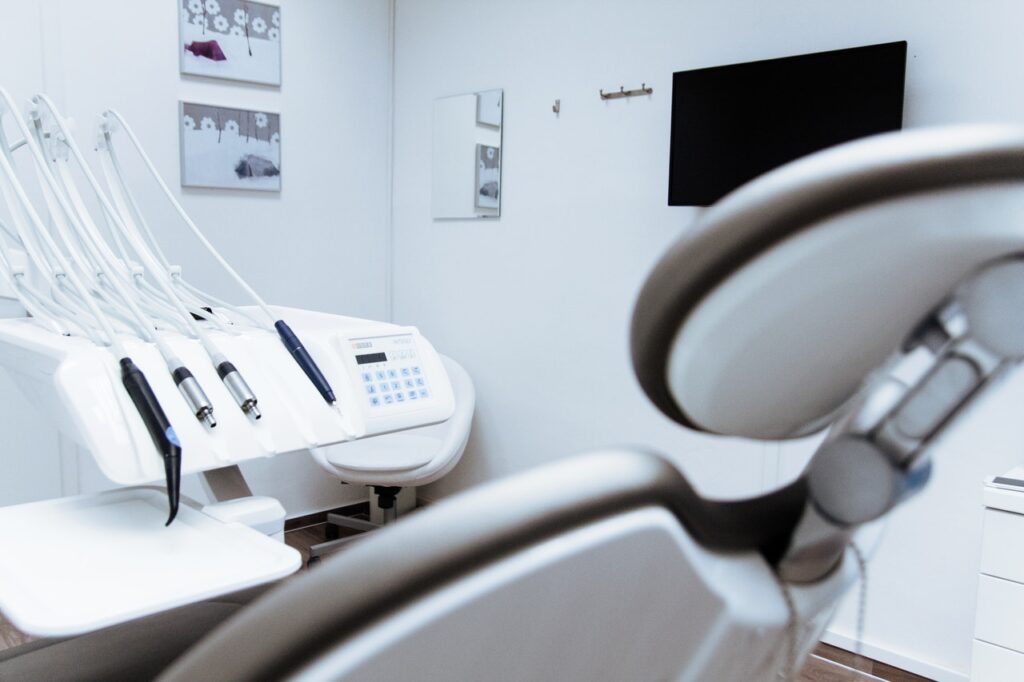by Jay | Jul 8, 2022 | Lifestyle |
When it comes to taking care of our elders, a lot goes into the equation. It can be challenging to know where to start, especially if you are new to the process. That’s why we have put together this information with valuable tips for taking care of your elders. By following these tips, you can ensure that your loved ones receive the best possible care!

Photo by Nick Karvounis on Unsplash
Establish a Routine
One of the most important things you can do for your elders is to establish a daily routine. This will help them feel more comfortable and secure and make your job as their caregiver much easier. Make sure to include meals, medication, bathing, and exercise time in their daily schedule.
Keep Them Comfortable
Another top priority should be to keep your elders comfortable. This means providing them with plenty of pillows and blankets, ensuring the temperature in their room is comfortable and they have access to all the items they need. Moreover, try to create an environment that is as calm and relaxing as possible. This can be achieved by playing soft music, keeping the lights dimmed, and avoiding loud noises. Comfort is also about mental stimulation. Be sure to provide your elders with books, magazines, puzzles, or anything else to help them stay mentally active and engaged.
Help Them with Personal Care
Personal care is another crucial aspect of taking care of your elders. This includes tasks such as bathing, dressing, and using the restroom. Although it may be difficult, trying to maintain your elders’ dignity and privacy during these moments is important. Allow them to do as much as possible independently, and only offer assistance when necessary. If you are helping them with a task such as bathing, make sure to use mild and respectful language. It is also essential to be patient, as some tasks may take longer than others.
Plan Their Meals
Another important part of taking care of your elders is making sure they are getting proper nutrition. This means planning and preparing their meals in advance. If possible, try to cook meals packed with nutrients and easy to digest. Soups, stews, and pureed foods are all excellent options. It is also important to ensure that your elders stay hydrated by providing them with plenty of fluids throughout the day. Water, juice, and herbal tea are all great choices. Avoid caffeinated beverages, as they can cause dehydration. In addition to healthy meals, you should also provide your elders with snacks they can enjoy between meals. Make sure to choose items high in protein and fiber, such as nuts, seeds, and dried fruit. Avoid sugary snacks, as they can cause blood sugar spikes. Last but not least, don’t forget to include their favorite foods! Even if it’s not the healthiest option, a little indulgence now and then can do wonders for their mood.
Difficult Diseases
As we age, our bodies become more susceptible to disease. This is why it is so important to take care of your elders and to be on the lookout for signs of illness. Some of the most common diseases that affect elders include diabetes, heart disease, Alzheimer’s disease, and cancer. If you notice any changes in your elder’s appearance or behavior, contact their doctor immediately. Early detection is key when it comes to these diseases. Dementia care can be difficult, so it is essential to get all the help you can. In addition to being on the lookout for signs of disease, you should also make sure your elders are up-to-date on their vaccinations. This will help protect them from potentially deadly illnesses like influenza and pneumonia. Make sure to talk to their doctor about which vaccinations are recommended for elders.
Find the Right Support System
Caring for aging loved ones can feel overwhelming at times, especially when balancing your own responsibilities. That’s why finding reliable outside help can make all the difference. Reading Care.com reviews can give you valuable insight into caregivers’ experience, professionalism, and compassion before making a decision. Many families use these reviews as a starting point to find trustworthy in-home aides, companions, or specialized care providers who align with their loved one’s needs and personality. Taking the time to research and build a dependable support network ensures your elders receive consistent care — and gives you the peace of mind you deserve.
These are just a few of the many things you can do to take care of your elders. Following these tips can help them live happy and healthy lives.
by | Jul 1, 2022 | Lifestyle |
Moving house is stressful enough as it is, whether you’re going cross-country or somewhere nearby. You must juggle the financial and paperwork of buying or renting a new house. But there’s also the logistics of physically moving your family and belongings to another property.
This stress can get even more overwhelming if you compound the issue by involving children and pets. So, how can you ensure that the house move goes smoothly for every family member?

Photo by HiveBoxx on Unsplash
Be Prepared
Preparation is the key to success. As soon as you know when and where you’re moving, you should take steps toward making the process easier. The first thing to do is to tell your children what’s happening.
Older children will find it easier to understand, but you should keep younger children in the loop, especially if they’ve never moved house before. They’re likely to be confused and worried about what’s happening, so telling them and reassuring them that things will be okay will minimize this. If your children are concerned about moving away from friends and family, then it’s essential to give them time to come to terms with the move and provide them with an opportunity to keep in touch with the people they’ll miss.
Another part of being prepared is to start packing in advance. If your children are old enough, you can rope them into packing their belongings and helping out around the house. Order some moving and packing boxes as soon as you have the moving date. This way, you can concentrate on getting over to your new property on the day rather than hurriedly packing everything up. The less stressed you are, the less stressed your family will be.
Get Help
When you’re trying to take care of young children or pets while moving, you will need some help. The moving process can be difficult for them to understand, and they could get in the way or even get injured while everyone is busy. Also, you will likely be busy during the day.
With this in mind, asking a friend or family member to take care of your children and pets on moving day will make things far less stressful for everyone involved. They can be out of the way, happy, and safe. Meanwhile, you can focus on moving without having to worry about them. If possible, it might be an idea to have them sleep over somewhere else until you have some semblance of organization in your new home.
Another way to make things easier for you and your family is to hire a professional removalist to help you to transport your furniture and belongings to your new home. While you can move some things in your car, your furniture needs something larger. Removalists can transport items safely and quickly, saving you a job and a lot of work. Then all you have to do is unpack and settle in.
by | Jun 30, 2022 | Lifestyle |
We all need to visit the dentist to maintain our dental health. As we are all well aware, she should visit our dentist once every six months, allowing for a routine checkup that can monitor the health and wellness of our teeth and gums. If you’re issue free, you get to go without any problems. If you need treatment, your dentist will be able to arrange and schedule this with you. Of course, many of us are already signed up for dental surgery. But there are a host of reasons that you could be looking for a new one. Perhaps you’ve recently moved home and need to find a practice that is more local. Maybe you’ve received subpar service at your current practitioner and are looking to try somewhere new. Whatever your reason, here are a few tips that will help you find the right dentist for you and your needs.

Photo by Daniel Frank / Image Source
Proximity
It’s all good and well finding the perfect dentist. Still, if they’re miles away, you’ll find it hard to get yourself to your appointments around work, children, and other life commitments – even if you only need to attend once every six months. Try to find a dentist that is local to you. Finding a dentist near me will ensure that attending your appointments isn’t a hassle, encouraging you to attend.
Services
Different dental practices specialize in other areas. Some will have a dentist who is particularly good at root canals, dental implants, cosmetic dentistry, teeth whitening, teeth straightening, veneers, children’s dentistry, or other focus areas. Consider what you’re looking for from your practitioner. This will help you to whittle down your search.
Facilities
Some dentists take longer to carry out specific treatments because they must wait for third parties to provide materials or molds. Some dentists can do this work in-house, reducing wait times for your treatment. It would be best if you looked for a dental practice with the facilities you’re looking for.
Wait Times
Some dentists have more demand than others. You don’t want to attend a dentist where you could wait months for an appointment—average question appointment wait times when choosing the right option to suit your needs. A good practitioner will be able to give you their current averages.
Reviews
Customer reviews can help you get an idea of how good the service is. You may find a practice that looks great, but the reviews say otherwise. This is good social proof that can help you to find a dentist who can be relied on. Remember, there’s so much more to dentistry and an excellent dental experience than simply finding someone who can do their job. You need good service, availability, sound equipment and resources, and more.
These are just a few starting points to work from when choosing the right dentist. Hopefully, they’ll help you on the path to the right person for your requirements!
by | Jun 22, 2022 | Lifestyle |
It’s regrettable, and we hope you never have to go through this, but sadly, sometimes people become injured. This isn’t a topic that anyone wants to dwell on. Still, it’s always important to make sure we pay attention to essential safety advice to limit this chance, no matter if that means wearing the suitable protective and visibility equipment when cycling (especially at night), looking both ways when you cross the road or following all of your workplace safety policies – it’s essential to never take safety for granted.

Pexels – CC0 License
This post intends to follow what happens after an injury has occurred. When you experience something like this, it can shock you to your core. Just know, however, that recovery is possible, and sometimes, you may be surprised at how quickly and capably this may happen. Asking for help at this time is essential. Yet it can also be that applying for specific third-party help will enable you to unlock your life going forward and retain your vital, energetic essence as if nothing had happened. Let’s consider where to start with this in mind:
Dental Care
It’s good to ensure your dental environment is seen at this time so that everything is put in place and your health is assured. Dental implant services may be able to help restore damage to your smile and dental environment, so you can feel good as new to the degree that this is possible. Furthermore, it can help you gain confidence in your smile and give you a reason to.
Occupational Therapy
Occupational therapy is an umbrella practice focused on helping you restore your mobility, learn general life tasks again, and find your footing in the best way. For instance, if you’re having trouble getting dressed, they can help put solutions that make this easier to deal with and help you build up your strength. From there, physiotherapists and more specialized aid may be required. This journey can take months, but it’s worth taking. Learning to walk again after a difficult accident has been possible for some people. It’s hard to think of anything more affirming than that.
Mental Health Counselling
Mental health counseling is an essential element that most people neglect. But if you were to have broken your arm, you wouldn’t just let it heal on its own without any outside support. So why allow your mind to operate in the same way? Unfortunately, you might have some trauma from the event that you need to deal with, especially as this relates to post-traumatic stress disorders that may otherwise occur. Sometimes, speaking candidly about your stressors and pains can help them seem manageable. Remember, there’s no shame in needing help with this. Sometimes the mental effects of suffering an injury can be greater than the actual damage when put into perspective of how long it affects you and what kind of recovery you’re open to.
With this advice, you’re sure to care for yourself well after an injury. But don’t be afraid to enlist help. You deserve that too.
Disclaimer:
The advice in this post is for informational purposes only. Please consult your medical professional for help with your specific issue if you need assistance.
by | Jun 13, 2022 | Lifestyle |
Stress is one of the biggest enemies of happiness. It can cause physical and emotional problems and lead to several health issues if left untreated. Unfortunately, stress is also a fact of life for many people. Whether you are a stay-at-home mom with kids to care for, a busy executive with a never-ending to-do list, or someone with many obligations, it’s essential to have some stress relievers in your arsenal. This blog post will discuss four ways to reduce stress and live a happier life!

Photo by RODNAE Productions from Pexels
Get Organized
One of the best ways to reduce stress is to get organized. You can make a list of everything that you need to do and then prioritize it. This way, you will feel more in control and less stressed overall. Furthermore, try to break down each task into smaller goals to seem more achievable. Additionally, establish set times for when you will work on specific tasks or projects. This will help eliminate any last-minute scrambling, leading to added anxiety. Finally, don’t forget to schedule some time for yourself! Whether reading, taking a bath, or going for a walk, do something you enjoy every day.
Exercise
Exercise is a great way to reduce stress. It releases endorphins, which have mood-boosting properties. Furthermore, it can also help to improve your sleep quality, which can further reduce stress levels. Even if you don’t have time for a full workout, try and fit in some activity throughout the day. For example, a simple walk around the block can make a big difference! If you are looking for more of a challenge, there are many high-intensity interval training (HIIT) workouts that can be done quickly. HIIT workouts alternate between periods of intense activity and brief rest periods and are very effective at reducing stress levels.
Connect with Nature
Spending time in nature can have a calming effect on the mind and body. If you live in a busy city, it can be especially beneficial to get away from the hustle and bustle and spend some time in a more tranquil setting. Even if you don’t have time for a weekend getaway, try to spend some time outdoors daily. A park or backyard can provide the perfect opportunity to clear your head and relax. If you are looking for an even more immersive experience, many “nature therapy” programs offer guided walks or hikes in beautiful settings. These programs can help you connect with nature and reduce stress simultaneously.
Natural Remedies
There are many natural remedies that can help to reduce stress. Some of the most popular include herbs such as lavender and chamomile, which have calming properties. Aromatherapy, meditation, and yoga are also great ways to reduce stress naturally. Or you can even try Bloom Farms CBD products, which promote relaxation and stress relief. If you are looking for a more hands-on approach, try acupressure or acupuncture. These ancient healing practices can effectively reduce stress levels and promote relaxation. Finally, don’t forget about the power of touch! Massages can be a great way to relieve tension and improve your overall sense of well-being.
While there are many ways to reduce stress, finding what works best for you is essential. Experiment with different techniques and find the ones that work best for you. Remember, the goal is to reduce your stress levels to live a happier and healthier life!
by | Apr 25, 2022 | From the Heart, Lifestyle |
Whether your senior relative has an issue with loneliness throughout the day or a medical condition that needs regular attention, the question will arise as to whether they should remain in their home or move to a community where their needs can be met more easily.

Photo by Vlad Sargu on Unsplash
This can be a hard decision to make – moving away from familiar surroundings is never easy. However, a change can increase the quality of life for your older relatives and offer them the care they need to live comfortably in their later years. These facilities are also social spaces.
Living Communities
Your senior relative might live in their home, but that doesn’t mean they have the best quality of life. If they live alone or in a community with neighbors outside their age group, they might feel lonely and isolated. It would be better if they were surrounded by people they could relate to.
Independent living communities are specially designed communities for older people who still have agile minds and physical mobility. Communities like https://catholiccarecenter.org/long-term-senior-care/ provide independent living environments; the only difference is they are in a community with people of a similar age.
Assisted Living
Whether it is meal deliveries, regular visits, or mobility services, an assisted living community is the halfway point between home care and care homes. These residential environments are perfect for senior relatives who still have independence but require additional assistance.
Not only does an assisted living community provide individual services for seniors, but it also creates an environment where they can feel comfortable and connected. This is extremely important in our later years and can significantly improve the quality of life for older people.
Care Homes
If you have a senior relative with some mobility issues or the onset of an age-related condition, a care home can be a better option than home care. While seniors appreciate the home spaces they are familiar with. It doesn’t always provide the best quality of life in later years.
Care homes provide safe and comfortable environments for people to live in; they also offer mental health services, medical services, and social services to ensure that seniors and happy, comfortable, and healthy. A care home can be a better option than home living in some cases.
Home Care
At other times, home care services are the best option because seniors are most comfortable in their home surroundings, but they need additional support services. Whether it’s health care, mobility issues, meal delivery, or social issues, professionals are arranged to visit.
Home care services might be the most appealing option for seniors initially; they get to stay in their familiar spaces; however, this option is also the most expensive and doesn’t have the community aspect offered by living communities. Also, new environments can soon feel homely.
Temporary Care
Another halfway option is temporary care. Temporary care is usually located in a convenient and comfortable space in the community. The senior relative will have to make their way to the center, but they have access to care services and can meet up with their community once there.
Temporary care is perfect for senior relatives with minor conditions, loneliness issues, or people who are recovering from an operation. Temporary care gives seniors a chance to leave the home and visit an outside location that caters to their care needs and social requirements.
Hybrid Care
Hybrid care is a form of a care plan that uses a combination of care strategies to create an individual plan suited to specific seniors. For example, a senior might require some temporary care and in-home care or independent living arrangements. It is a bespoke care solution.
Although hybrid care is the perfect solution for many families, it can be more expensive than a single solution; that said, hybrid care can be worth the expense to cater to the specific requirements of your senior relative. It might allow them to remain at home and have needs met.
Palliative Care
If your senior relative has a serious long-term illness or a terminal illness, they might require palliative care. This care type is given to people to relieve stress and treat symptoms of the condition; palliative care can be provided in the home or in a dedicated facility or care home.
Palliative care aims to treat symptoms and improve the quality of life for older people in later life. In most cases, palliative care is provided outside the home in a unique facility with the right staff and medical equipment. Sometimes, this is the best place for senior relatives.










Follow!